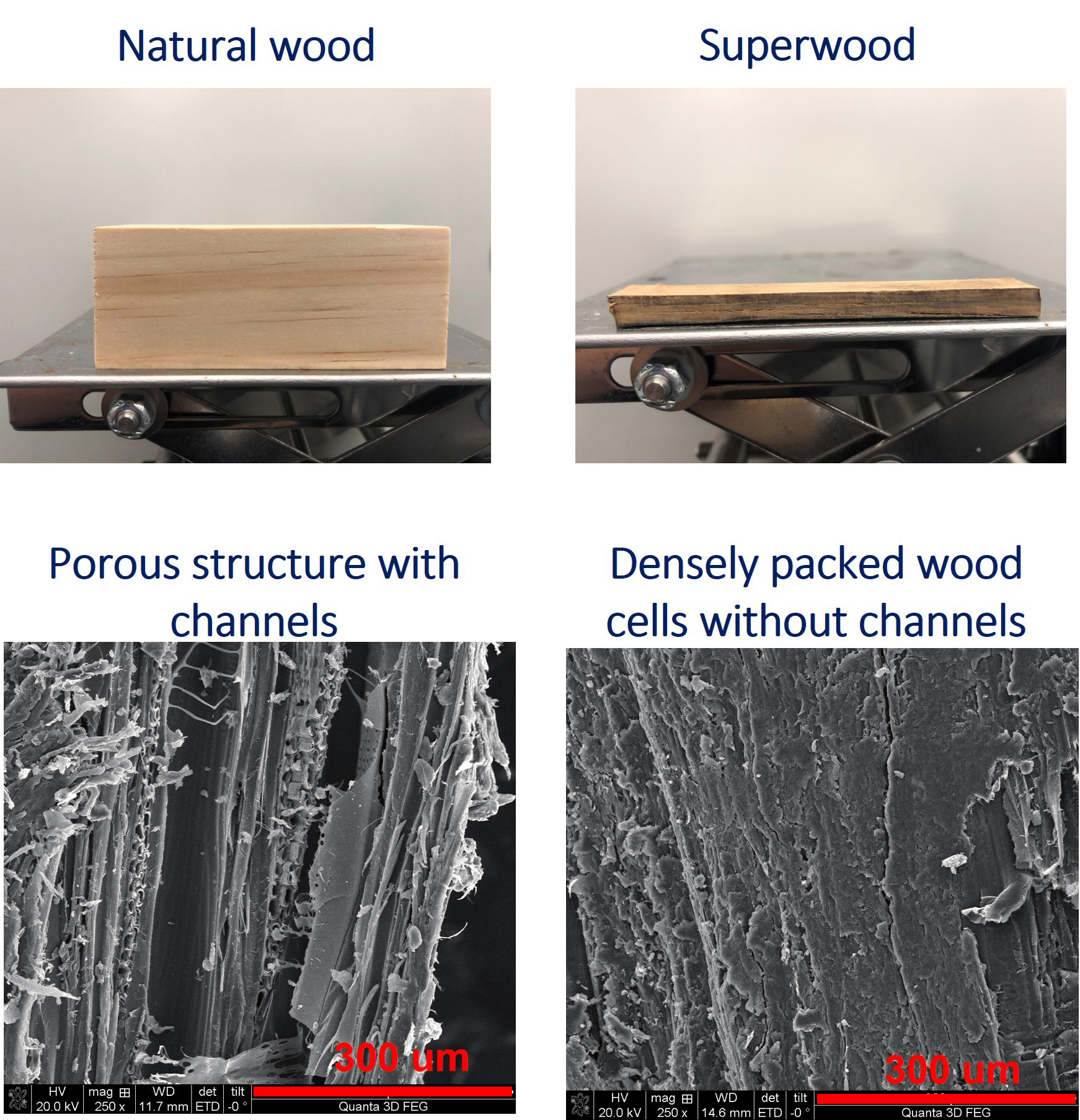LSU CEE Professor Lin Develops Superwood for Infrastructure
April 6, 2022
 BATON ROUGE, LA – With the development of steel and concrete piles over the years,
the use of timber piles in civil infrastructure has steadily declined. While timber
piles are a renewable and a low-cost foundation system, they have low stiffness and
strength, limiting their applications to lightly-loaded structures. Enter superwood.
BATON ROUGE, LA – With the development of steel and concrete piles over the years,
the use of timber piles in civil infrastructure has steadily declined. While timber
piles are a renewable and a low-cost foundation system, they have low stiffness and
strength, limiting their applications to lightly-loaded structures. Enter superwood.
LSU Department of Civil and Environmental Engineering Assistant Professor Hai “Thomas” Lin is developing timber with high stiffness and strength that is durable, cost-effective, and can be used for heavily-loaded and resilient civil infrastructure called superwood.
“Recent research on wood-based nanomaterials has led to a high-performance structural material known as superwood,” Lin said. “It’s desirable for advanced applications in the fields of civil, automotive, aerospace, and manufacturing engineering.”
Superwood is a densified wood material produced by partially delignifying natural wood and subsequent densification through hot pressing. Superwood production is potentially sustainable and cost-effective, as it avoids energy-intensive manufacturing processes associated with Portland cement and steel.
“The strength and elastic modulus of superwood are not only superior to those of natural wood but could also exceed those of concrete,” Lin said. “Superwood also has excellent durability against moisture-induced decay and insects, such as termites, with minimal strength reduction.”
Superwood piles are expected to mitigate the disadvantages of current timber piles, such as low structural capacity, vulnerability to damage during hard driving, and susceptibility to decay, as well as exceed the performance of timber and concrete piles for both service and strength limit states.
The objective of Lin’s research is to optimize processing conditions for producing superwood piles in relation to their mechanical properties and durability performance, including decay and termite resistances; investigate the soil-pile interaction behavior of superwood piles through laboratory experiments; develop numerical models to predict the responses of superwood piles under different soil and loading conditions; and assess the cost and environmental impacts of superwood piles by performing life-cycle analysis.
“This research will promote further development of superwood in geotechnical engineering, including ground improvements, retaining walls, and support of excavation structures,” Lin said.
Lin’s research will use experimental and modeling techniques and life-cycle analysis to engineer and verify the superwood pile foundation system through collaboration between geotechnical and wood composite engineering researchers. He will recruit two high school students from the LSU College of Engineering High School Summer Research (HSSR) program this summer.
“The HSSR program is an outreach initiative aimed at engaging high-achieving high school students in real research in the fields of engineering,” Lin said. “As part of its strategic plan, mission, and vision, the College of Engineering is dedicated to developing students into the next generation of transformative problem solvers for the region, state, and beyond.”
Like us on Facebook (@lsuengineering) or follow us on Twitter and Instagram (@lsuengineering).
###
Contact: Libby Haydel
Communications Specialist
ehaydel1@lsu.edu
225-578-4840